By now, we’re all accustomed to the modern convenience of LED lighting. However, LEDs come in various color temperatures, and selecting the right one depends on the specific areas of your home or outdoor spaces where lighting is needed. This article will delve into the distinctions between Soft White and Daylight LEDs. While personal preference often plays a role, these two color temperatures serve different purposes, making it easier for you to choose the one that best suits your needs.
Table of Contents
ToggleWhat is Soft White Light?
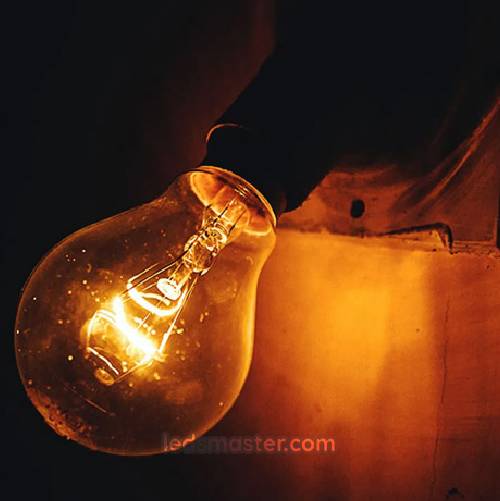 “Soft White” is a term commonly associated with a cozy, inviting light color. It’s often misunderstood because “soft” might suggest a particular coating on an LED bulb. In reality, Soft White refers to a specific color temperature. Many LED bulbs may feature a diffusing coating that softens the emitted light without altering its color spectrum. Therefore, the term “soft” can be somewhat misleading when shopping for bulbs.
“Soft White” is a term commonly associated with a cozy, inviting light color. It’s often misunderstood because “soft” might suggest a particular coating on an LED bulb. In reality, Soft White refers to a specific color temperature. Many LED bulbs may feature a diffusing coating that softens the emitted light without altering its color spectrum. Therefore, the term “soft” can be somewhat misleading when shopping for bulbs.
Soft White light falls within the Kelvin temperature scale at around 2700K. This temperature produces a warm, friendly light similar to traditional incandescent bulbs, which emit a slightly orange-yellow hue due to their burning filaments. Regardless of the wattage, this warmth was a familiar standard with older bulbs. Thus, Soft White describes the characteristic color of light produced by certain LED bulbs, replicating that classic, comforting glow.
What is Daylight?
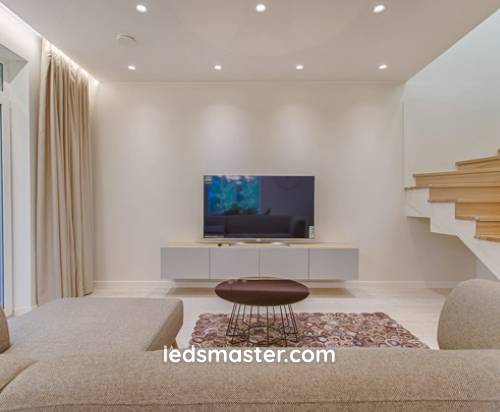 Daylight-colored light is another point on the Kelvin scale, typically rated around 6500K in LED bulbs. This light mimics the natural daylight we see outdoors, and while it can sometimes be softened, it is generally much brighter and more intense than Soft White. You’ll often find Daylight lighting in environments like hospitals, jewelry stores, and museums, where a high level of detail is essential due to the light’s brightness and clarity.
Daylight-colored light is another point on the Kelvin scale, typically rated around 6500K in LED bulbs. This light mimics the natural daylight we see outdoors, and while it can sometimes be softened, it is generally much brighter and more intense than Soft White. You’ll often find Daylight lighting in environments like hospitals, jewelry stores, and museums, where a high level of detail is essential due to the light’s brightness and clarity.
Although Daylight lighting can seem too bright and stark for home interiors, it has its advantages in specific situations. It’s excellent for accent lighting or creating a natural light atmosphere in certain rooms. Outdoors, Daylight-colored light is perfect for illuminating large areas like backyards, as it effectively brightens up spaces without making them feel overly harsh, making it ideal for patios and porches.
Why Do We Need LED Bulbs with Different Color Temperatures?
 The necessity for LED bulbs with varying color temperatures ultimately revolves around personal lighting needs. LEDs offer the flexibility to select a color temperature from the Kelvin scale that suits specific moods and effects. This versatility is particularly crucial for appropriate lighting in different areas of your home and outdoor spaces, where the light requirements can vary significantly.
The necessity for LED bulbs with varying color temperatures ultimately revolves around personal lighting needs. LEDs offer the flexibility to select a color temperature from the Kelvin scale that suits specific moods and effects. This versatility is particularly crucial for appropriate lighting in different areas of your home and outdoor spaces, where the light requirements can vary significantly.
Mood and Effect
Choosing the right color temperature can enhance the ambiance or create a particular mood in a room. Warmer light, with lower Kelvin values, creates a cozy and inviting atmosphere, making it ideal for living rooms and bedrooms. Conversely, cooler light, with higher Kelvin values, provides a more energizing and focused environment, suitable for workspaces or kitchens.
Functional Application
Specific activities and areas require distinct lighting. Higher Kelvin temperatures, which emit cooler and brighter light, are essential for detailed tasks like reading or working, providing clarity and reducing eye strain. Softer and warmer lighting is more comfortable for general illumination and relaxation, making it preferable for spaces meant for unwinding.
Room-Specific Needs
Within a home, different rooms benefit from different color temperatures. For example, a soft white light (around 2700K) is ideal for bedrooms and living rooms, creating a warm and relaxing atmosphere. In contrast, daylight (around 6500K) is more appropriate for areas requiring high visibility and focus, such as bathrooms or offices.
Outdoor Lighting
The right color temperature is equally important for outdoor settings. Cooler light temperatures are better for security and large-area illumination, like in yards or around sports facilities, providing bright and clear lighting. Meanwhile, warmer temperatures are suitable for creating a welcoming ambiance on patios or walkways.
Flexibility with Dimmable LEDs: Dimmable LED lights further enhance the benefits of different color temperatures. They allow you to adjust the brightness to match the desired mood or activity, adding versatility to your lighting setup. A brightly lit room can be dimmed for a more relaxed setting, offering a tailored lighting experience.
Which is Better for Your Eyes?
Choosing between Soft White and Daylight LED lighting for eye comfort can be challenging because each has distinct advantages and disadvantages depending on the situation.
| Pros | Cons | |
| Soft White Light | Soft White light, typically around 2700K on the Kelvin scale, is gentle on the eyes and creates a warm, cozy ambiance. It’s ideal for relaxing activities like reading in bed or lounging in the living room. The softer, yellowish glow minimizes eye strain in low-stress environments, making it comfortable for prolonged exposure. | In settings where precision and clarity are needed, Soft White light may not provide sufficient illumination. For example, it might not be suitable for detailed tasks or outdoor activities in low-light conditions. Its warm hue can make it harder to distinguish fine details, leading to potential eye strain in these scenarios. |
| Daylight Light | Daylight LED light, around 6500K, mimics natural sunlight and provides bright, clear illumination. It’s excellent for activities that require attention to detail, such as working on projects in a garage, cooking in the kitchen, or any task where seeing finer details is crucial. This brightness reduces eye strain during high-focus activities and can enhance visibility. | Daylight light can be too intense and harsh for casual settings or relaxation. Its bright, white light can make rooms feel stark and uninviting, much like the lighting in a doctor’s office. This intensity can cause discomfort and eye strain if used for long periods in areas intended for relaxation or where a softer light is preferred. |
Balancing Eye Comfort and Functionality
For Reading
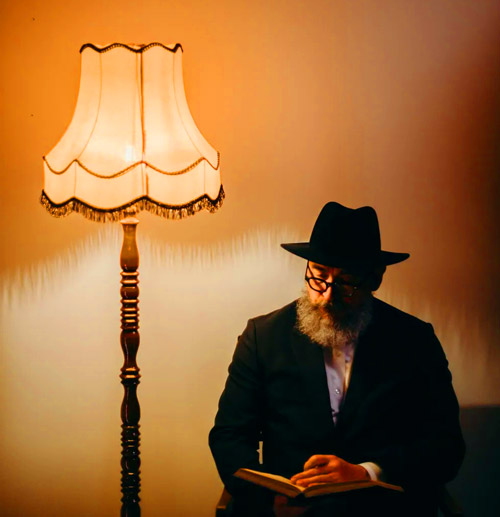 Soft White light is the preferred choice for reading in comfortable settings. Its warm glow reduces glare and eye strain, creating a cozy atmosphere conducive to extended reading sessions. In contrast, Daylight light may be too harsh, detracting from the reading experience by causing discomfort and making it less enjoyable.
Soft White light is the preferred choice for reading in comfortable settings. Its warm glow reduces glare and eye strain, creating a cozy atmosphere conducive to extended reading sessions. In contrast, Daylight light may be too harsh, detracting from the reading experience by causing discomfort and making it less enjoyable.
For Precision Tasks
In environments requiring high visibility and attention to detail, such as workshops, kitchens, or study areas, Daylight light shines brightest. Its clarity and brightness make it ideal for performing intricate tasks without straining the eyes. Whether you’re measuring ingredients in the kitchen or working on a delicate project in your workshop, Daylight light ensures precision and accuracy.
For Outdoor and Sport Lighting
When it comes to outdoor activities and sports, Daylight light takes the lead. Its brightness provides the necessary illumination to see clearly and perform well, even in dim conditions. Whether you’re playing a game of basketball under the stars or going for an evening run, Daylight light ensures optimal visibility and safety. Soft White light, with its mellow glow, is typically not suitable for these applications as it may not provide enough brightness for outdoor activities.
Dimmable LED Options
Dimmable LEDs offer a practical solution for adjusting the brightness of either Soft White or Daylight lighting to suit your needs. This flexibility allows you to create the perfect lighting environment for any occasion. Whether you prefer a bright Daylight setting for focused tasks or a softer Soft White ambiance for relaxation, dimmable LEDs provide the versatility to customize your lighting experience according to your preferences.
Which is Better for Sports Fields?
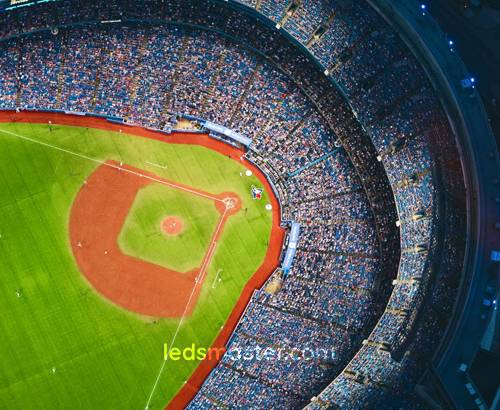 When it comes to sports fields, the choice between Soft White and Daylight lighting is straightforward. Daylight lighting is superior for several compelling reasons.
When it comes to sports fields, the choice between Soft White and Daylight lighting is straightforward. Daylight lighting is superior for several compelling reasons.
Soft White Lighting
Insufficient Visibility
Longer Soft White bulbs, distinguished by their warm, yellowish glow, typically around 2700K on the Kelvin scale, are ill-suited for sports fields. This particular type of lighting lacks the necessary brightness required to effectively illuminate the entire field, thereby posing significant challenges for players. The subdued nature of Soft White light fails to provide the level of illumination needed to discern small details on the field, hindering players’ ability to accurately perceive their surroundings. Additionally, the warm hue of Soft White light tends to obscure vivid colors, further impeding visual clarity and reducing depth perception. Consequently, overall visibility is compromised, negatively impacting players’ performance and potentially increasing the risk of accidents or injuries on the field.
Increased Risk
Insufficient lighting stemming from Soft White bulbs represents a significant safety concern on sports fields. The lack of adequate illumination can dramatically increase the likelihood of injuries among players. When visibility is compromised, players face challenges in discerning obstacles and accurately assessing distances, rendering them vulnerable to missteps or collisions with other players or equipment.
Moreover, the dimly lit environment, reminiscent of candlelight, exacerbates these challenges. The subdued illumination not only impairs players’ ability to navigate the field effectively but also hampers spectators’ ability to follow the action. As a result, the overall viewing experience is compromised, and the excitement of the game may be diminished.
Daylight Lighting
Enhanced Clarity
Daylight LED lights, typically rated around 6500K on the Kelvin scale, offer a luminous, white glow that closely mimics the brilliance of natural daylight. This potent brightness is paramount for sports fields, as it facilitates optimal visibility and swift reactions among players. The high level of illumination provided by Daylight LEDs enables players to perceive their surroundings with exceptional clarity, enhancing their ability to react swiftly and accurately.
Accurate eye-hand coordination is crucial in sports, and the heightened visibility afforded by Daylight lighting significantly contributes to this aspect. Whether it’s catching a football hurtling through the air, accurately striking a tennis ball, or tracking the trajectory of a swiftly moving object, the enhanced clarity provided by Daylight LEDs ensures that players can perform these actions with precision and confidence.
Daylight lighting eliminates the ambiguity and shadows that can obscure objects on the field, ensuring that players have a clear view of the game’s dynamics. This clarity not only enhances the quality of gameplay but also minimizes the risk of accidents or injuries resulting from misjudgments or collisions.
Improved Performance and Safety
Daylight lighting offers a uniform illumination across the entire field, providing an optimal environment for players to showcase their skills and perform at their best. This consistent brightness ensures that every corner of the field is well-lit, leaving no area in shadows or obscurity. As a result, players can move with confidence and clarity, knowing that they have a clear view of their surroundings.
The even distribution of light facilitated by Daylight lighting enables judges and referees to make precise calls with confidence. With a clear and unobstructed view of the field, officials can accurately assess player actions, track the trajectory of the ball, and make timely decisions. This enhances the fairness and integrity of the game, ensuring that each play is adjudicated with precision and impartiality.
One of the key advantages of Daylight lighting is its ability to minimize shadows and glare on the field. By reducing these visual distractions, players can maintain focus and concentration, essential for executing precise movements and making split-second decisions. This not only enhances the quality of gameplay but also reduces the likelihood of accidents or errors resulting from obscured vision.
Spectator Experience
For spectators, Daylight lighting significantly enhances the viewing experience by providing a clear and detailed perspective of the game. Whether seated in the stands or watching from afar, spectators benefit from the bright and consistent illumination that Daylight lighting offers. This clarity ensures that every aspect of the game, from player movements to ball trajectory, is visible with precision and detail.
Daylight lighting eliminates the shadows and dimly lit areas that can obscure the action on the field, ensuring that spectators have an unobstructed view of every play. Whether it’s a thrilling touchdown, a decisive penalty kick, or a dramatic rally, Daylight lighting ensures that spectators can follow the action with ease and excitement.
The vibrant and natural quality of Daylight lighting enhances the colors and details of the game, making the experience more immersive and engaging. From the vibrant hues of team jerseys to the intricate movements of players, Daylight lighting brings the game to life, allowing spectators to feel more connected and involved in the action.
Practical Considerations
Night Sports
Daylight lighting plays a vital role in facilitating night sports, offering a solution that enables games to continue well after sunset with minimal disruption to player performance or safety. The key advantage of Daylight lighting lies in its ability to replicate the natural brightness and clarity of daylight, effectively extending the hours of play into the evening hours.
By closely mimicking natural light, Daylight lighting ensures that players have the visibility and clarity they need to perform at their best, even under the cover of darkness. This is particularly crucial for sports that rely heavily on precision and coordination, such as football, soccer, or tennis. With Daylight lighting illuminating the field, players can accurately perceive their surroundings, track the trajectory of the ball, and execute their movements with confidence and precision.
Field Applications
Daylight LEDs are extensively utilized in a multitude of outdoor sports settings, ranging from football and baseball fields to tennis courts. Renowned for their ability to deliver optimal illumination, Daylight LEDs play a pivotal role in ensuring that players can compete effectively regardless of the time of day or prevailing environmental conditions.
In sports like football, baseball, and tennis, where swift reflexes and precise movements are paramount, Daylight LEDs provide the necessary clarity and brightness for players to track the ball accurately and execute their plays with precision. The intense illumination offered by Daylight LEDs ensures that every aspect of the game, from the trajectory of the ball to the positioning of opponents, is clearly visible to players, thereby enabling them to make split-second decisions and respond swiftly to changing circumstances on the field or court.
Which is Better for the Kitchen?
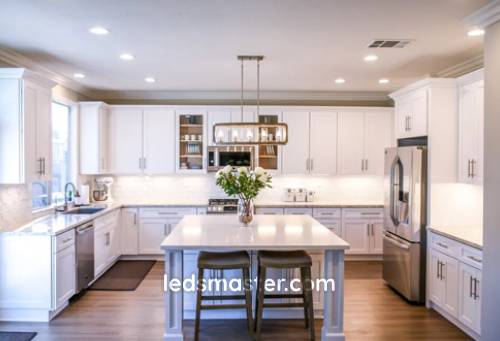 Soft White lighting, with its warm and inviting glow, is excellent for creating a cozy atmosphere in the kitchen. This type of lighting, typically around 2700K on the Kelvin scale, makes the kitchen a welcoming place where people enjoy spending time. It bathes the area in a comforting light that is perfect for dining or casual conversations. Overhead Soft White lights contribute to this ambiance, making the kitchen a pleasant environment for family gatherings or intimate dinners.
Soft White lighting, with its warm and inviting glow, is excellent for creating a cozy atmosphere in the kitchen. This type of lighting, typically around 2700K on the Kelvin scale, makes the kitchen a welcoming place where people enjoy spending time. It bathes the area in a comforting light that is perfect for dining or casual conversations. Overhead Soft White lights contribute to this ambiance, making the kitchen a pleasant environment for family gatherings or intimate dinners.
However, for the practical aspects of food preparation, brighter and more focused lighting is necessary. This is where Daylight lighting, around 6500K, comes into play. Daylight lighting provides a clear, bright illumination that is essential for safely handling sharp knives and other kitchen tools. It enhances visibility on countertops and workspaces, allowing for precise cutting, measuring, and cooking. Tiny Daylight spot lamps or under-cabinet lights are ideal for illuminating these areas, ensuring that every detail is visible and reducing the risk of accidents.
Modern kitchens often combine these two types of lighting to achieve both functionality and aesthetics. Soft White lights create a warm, overall illumination that sets a comfortable tone, while Daylight spot lamps enhance task lighting in critical areas. This layered approach not only makes the kitchen look appealing but also supports the various activities that take place within it.
Additionally, many contemporary LED lighting solutions offer the versatility to adjust brightness and color temperature. Some LED kits come with remote controls or dimmable features, allowing you to tailor the lighting to different times of the day or specific activities. Whether you need a brightly lit space for meal preparation or a softer light for a relaxing evening, these adaptable lighting options provide the flexibility required for a multifunctional kitchen.
Which is Better for the Living Room?
The living room serves as the central hub of family activities, ranging from relaxing and reading to watching TV and socializing. The lighting in this space needs to be thoughtfully planned to accommodate these diverse activities. The choice between Soft White and Daylight lighting depends on how you intend to use the room and the ambiance you want to create.
Soft White Lighting
Soft White lighting, which typically ranges around 2700K on the Kelvin scale, is excellent for creating a warm, inviting atmosphere in the living room. This type of lighting is ideal for overhead lamps or recessed lights, providing a cozy glow that makes the space feel comfortable and welcoming. Soft White light enhances the room’s ambiance, making it perfect for relaxing activities such as reading, chatting, or enjoying a quiet evening. It’s particularly effective for setting a tranquil and cozy mood, which is often desired in a living room setting.
Daylight Lighting
Daylight LEDs, around 6500K, offer a brighter, more natural light that can be useful for specific tasks within the living room. While they might seem too harsh as the primary lighting source, they work well as accent lighting for certain areas or tasks. For instance, if you have a pool table in the living room, Daylight LEDs can provide the clarity needed for playing. Additionally, daylight lighting is beneficial for activities that require higher visibility, such as hobbies or projects that you might undertake in the living room.
Combination Lighting Strategy
In many modern living rooms, a combination of Soft White and Daylight lighting proves to be the most versatile solution. Overhead lighting can be primarily Soft White, creating a general warm glow throughout the room. To add flexibility, incorporating dimmable daylight LEDs in accent lamps or specific areas can enhance functionality. This layered approach allows you to adjust the lighting to suit different activities and moods. For example, using Soft White lighting for watching TV or casual gatherings, and brightening up certain areas with Daylight lamps when more illumination is needed for tasks like reading or playing games.
Dimmable fixtures provide added convenience, allowing you to control the intensity of both Soft White and Daylight lighting based on your needs. This adaptability ensures that the living room can transition smoothly from a brightly lit space for active engagements to a dimly lit environment perfect for movie nights or relaxation.
Which is Better for the Bathroom?
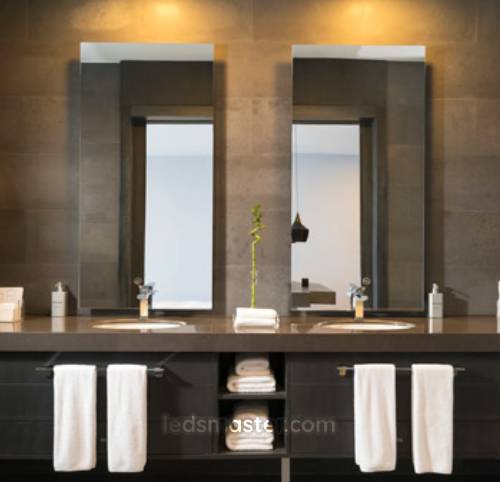 Bathrooms are often designed to reflect a particular style or personal taste, but functionality should be a key consideration in choosing lighting. Given the range of activities that take place in a bathroom throughout the day, effective lighting is essential. Most modern bathrooms incorporate two or three types of lighting: one for the bathroom mirror, one for the overall room, and at least one accent light. Each type of lighting serves a distinct purpose and requires careful selection of either Soft White or Daylight LEDs.
Bathrooms are often designed to reflect a particular style or personal taste, but functionality should be a key consideration in choosing lighting. Given the range of activities that take place in a bathroom throughout the day, effective lighting is essential. Most modern bathrooms incorporate two or three types of lighting: one for the bathroom mirror, one for the overall room, and at least one accent light. Each type of lighting serves a distinct purpose and requires careful selection of either Soft White or Daylight LEDs.
The lighting around the bathroom mirror is particularly crucial because activities such as shaving, applying makeup, and other grooming tasks demand clear and accurate illumination. For these tasks, Daylight LEDs are the best choice, as they provide bright, natural light that ensures true color rendering and clarity. Positioning lights around the mirror or overhead can create full, even coverage, reducing shadows and providing a clear view of your reflection. Ideally, these lights should be set on a dimmer control, allowing you to adjust the brightness as needed for various times of the day or different activities.
When it comes to the overall room lighting, the choice between Daylight and Soft White is more flexible and can be guided by personal preference. Daylight LEDs offer a bright, invigorating light that is useful for general visibility, especially in bathrooms with limited natural light. On the other hand, Soft White LEDs, with their warm glow, create a more relaxed and inviting atmosphere, which can be pleasant for morning routines or winding down in the evening. Ultimately, the choice for overhead lighting should complement the desired ambiance of your bathroom.
Accent lighting provides additional versatility and can be used to highlight specific areas such as the bathtub or a home spa. Here, the choice of lighting can vary based on the intended use. If you aim to enhance relaxation, a dimmable light or one with changing colors can create a soothing environment, perfect for a tranquil soak in the tub. These lights can be adjusted to match your mood, offering a range of lighting options beyond the traditional candlelit bath.
Which is Better for Outdoor Lighting?
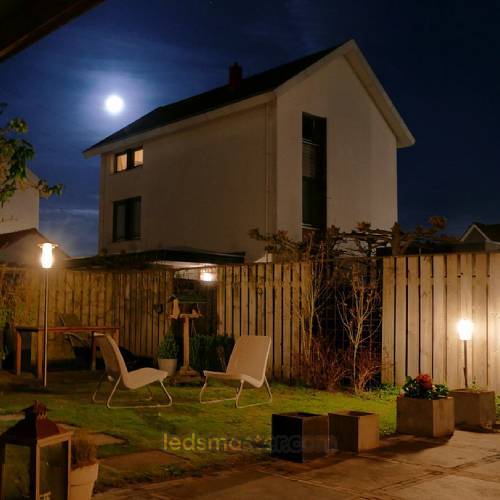 When it comes to outdoor lighting, the choice between Soft White and Daylight LEDs can significantly impact the ambiance and functionality of your outdoor spaces. Your backyard or patio serves as a hub for entertaining friends and family, and the right lighting can enhance these areas, making them both beautiful and practical.
When it comes to outdoor lighting, the choice between Soft White and Daylight LEDs can significantly impact the ambiance and functionality of your outdoor spaces. Your backyard or patio serves as a hub for entertaining friends and family, and the right lighting can enhance these areas, making them both beautiful and practical.
For areas like gardens or lawns that require ample illumination, Daylight LEDs are ideal. These lights, with their bright and clear quality, ensure that outdoor spaces are well-lit and visible, which is particularly useful for activities like gardening, outdoor games, or evening gatherings. Daylight LEDs provide a high level of brightness that replicates natural sunlight, making it easier to see and appreciate the details in your landscaping. Additionally, decorative solar-powered lights can be used to add charm and a magical touch to pathways, garden features, or flower beds, creating an enchanting atmosphere without the need for wiring.
In contrast, for patio areas or spaces where a warm and inviting atmosphere is desired, Soft White LEDs are more suitable. Soft White lights, with their gentle, warm glow, create a welcoming environment that is perfect for social gatherings, dining, or relaxing evenings outdoors. These lights help to create a cozy and intimate setting that encourages conversation and relaxation. When arranging your patio lighting, consider using a combination of Soft White LEDs for general illumination and hiding any floodlights behind objects or landscape features to reduce glare. This approach can mimic the lighting techniques used in places like Disneyland’s Dark Rides, where lighting elements are strategically concealed to enhance the visual appeal without exposing the light sources directly.
A well-designed outdoor lighting plan often incorporates a blend of both Daylight and Soft White LEDs. Daylight LEDs can be used to highlight specific areas or provide task lighting, while Soft White LEDs can be employed to create ambient lighting that enhances the overall atmosphere. The key is to balance functionality with aesthetic appeal, ensuring that your outdoor spaces are both practical for various activities and inviting for social interactions.
Conclusion
When deciding between Soft White and Daylight LEDs for outdoor lighting, it’s essential to consider the specific needs and ambiance of your outdoor spaces. Daylight LEDs provide bright and clear illumination, perfect for areas requiring ample visibility such as gardens or lawns. On the other hand, Soft White LEDs create a warm and inviting atmosphere, ideal for socializing and relaxation on patios or around seating areas. By combining both types of lighting strategically, you can create a versatile and visually appealing outdoor environment that enhances both functionality and aesthetics, ensuring your outdoor spaces are well-lit and welcoming for various activities and occasions.

